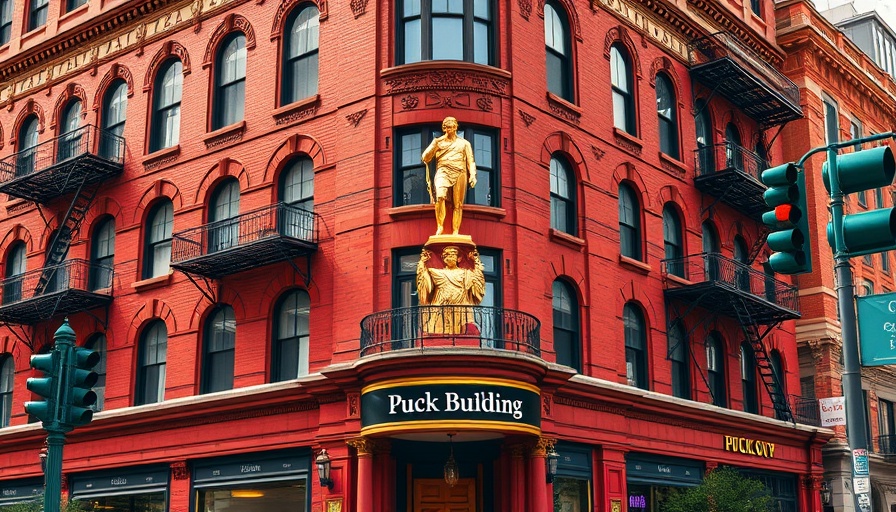
Historic Charm Meets Modern Luxury: The Puck Building's Evolution
The Puck Building, a stunning architectural gem located on the vibrant streets of New York City, is not just an indelible part of the city's skyline; it is a symbol of the interplay between humor and luxury. Dominating the block bordered by East Houston, Lafayette, Mulberry, and Jersey Streets, this striking red-brick structure originally served as the home of Puck Magazine, America’s first successful humor magazine. Constructed between 1886 and 1893, the building showcases a blend of Romanesque Revival architecture, featuring rhythmic arches and richly textured brickwork.
At the forefront of its facade is a whimsical gilded statue of Puck, the mischievous fairy from Shakespeare's A Midsummer Night's Dream. This statue, designed by Henry Baerer, captures Puck's essence—laughing at the follies of humanity while holding a fountain pen and hand mirror, reminding us of the enduring nature of satire and reflection.
From Satirical Roots to Luxurious Heights
Initially commissioned by Joseph Keppler in 1885, the Puck Building was a hub for satirical art that lampooned societal norms and political follies of the time. Its publications, filled with colorful cartoons and biting humor, became a cornerstone of American media culture. However, with the rise of wartime challenges, the magazine ceased operations in 1918, leaving behind a legacy that shaped American satire.
As time progressed, the building transformed. Acquired by Kushner Companies in 1980, the Puck Building underwent significant renovations, evolving from a bastion of humor to a beacon of luxury. The upper floors now house opulent penthouses equipped with high-end amenities, including wine cellars and home theaters, marrying historical significance with contemporary decadence.
Legacy and Preservation: A Dual Narrative
The renovation of the Puck Building has been particularly mindful of its historical roots, preserving many architectural elements that reflect its storied past. This includes the iconic Puck statues that still stand guard at its entrances. Today, both the interior and exterior of the building remind us of a time when wit and humor played a pivotal role in everyday life, all while adapting to the luxe lifestyle of 21st-century New Yorkers.
As the Puck Building continues to thrive, it serves as a striking reminder that spaces can embody both history and modernity. It celebrates the human condition—an ethos echoed by Puck's own words: "What fools these mortals be!" This dual narrative resonates strongly with a diverse audience, particularly professionals like lawyers, accountants, and medical practitioners, who navigate a complex world where both humor and prestige have a place.
The Importance of Recognizing Our Cultural Landmarks
For those living and working in New York City, buildings like the Puck are not just structures; they are storytellers of our shared cultural history. Understanding the stories behind our landmarks fosters a deeper connection to our environment, enriching both personal and professional lives. As the city continues to evolve, let us appreciate its past while embracing the luxurious lifestyles of today.
 Add Row
Add Row  Add
Add 




Write A Comment